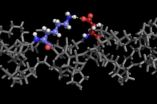(Press-News.org) Research: Cardiovascular disease risk in healthy children and its association with body mass index: systematic review and meta-analysis
Editorial: Obesity in children and adolescents
Being obese as a child or adolescent may have a larger effect on future health than previously thought, suggests a study published on bmj.com today.
It comes as New York City passes a ban on large-size sugary drinks to help tackle obesity and related health problems in the US. MPs are now calling on the government to introduce similar legislation in the UK.
Researchers at the University of Oxford show that obese children and adolescents have several risk factors for heart disease including raised blood pressure, cholesterol and blood sugar levels, and a thickening of the heart muscle, compared with normal weight children.
They warn that, if these risk factors are allowed to progress into adulthood, obese children could already be at a 30-40% higher risk of future stroke and heart disease than their normal weight counterparts.
Being overweight in adulthood is well known to increase the risk of cardiovascular disease. The effect of obesity on children is less well understood, but a growing body of evidence suggests a similar association.
So a team of researchers based at the University of Oxford set out to examine the scale of the association between weight and risk factors for heart disease in children.
They analysed the results of 63 studies involving 49,220 healthy children aged between five and 15 years old. Only studies conducted after 1990 in highly developed countries and published between 2000 and 2011 were included.
The studies measured weight and one or more known cardiovascular disease risk factors, such as high blood pressure, high cholesterol and blood glucose levels.
Overweight was defined as a body mass index (BMI) of 25 to 30 and obesity was defined as BMI of 30 or more. Differences in study quality were taken into account to identify and minimise bias.
Compared with normal weight children, obese children had significantly higher blood pressure and cholesterol levels. Overweight children also had raised blood pressure, but to a lesser degree than obese children.
Fasting insulin levels and insulin resistance (known markers for diabetes) were significantly higher in obese children, but not in overweight children.
Obese children also had a significant increase in left ventricular mass (a thickening of the heart muscle and often a marker for heart disease) compared with normal weight children, even after adjusting for height.
The authors say that the exact ages at which changes in a child's risk factors begin need to be established to help build a more accurate picture of the cardiovascular risk these young people are likely to face as adults.
"Weight, and especially obesity, has a significant effect on the risk parameters for cardiovascular disease that are present in children from age five years," they conclude. "This effect could give them a head start on their normal and even overweight classmates for future cardiovascular disease, diabetes and stroke."
In an accompanying editorial, Lee Hudson and Russell Viner at the UCL Institute of Child Health in London, say this review "provides a stark illustration of the probable threat that childhood obesity poses to disease burden in the population."
They say further work is needed to guide assessment and treatment decisions, and to tease out the effects of age and pubertal status on cardiovascular risk. In the meantime, the findings "challenge us to rethink our approaches to identifying cardiometabolic abnormalities in obese children."
### END
Future health risks for obese children may be greater than previously thought
Previous studies may have underestimated the effect on future health, say authors
2012-09-26
ELSE PRESS RELEASES FROM THIS DATE:
Should celebrities get involved in public health campaigns?
2012-09-26
Simon Chapman, Professor of Public Health at the University of Sydney thinks the extra publicity that celebrities provide can help promote public health. He acknowledges that celebrities are not experts but says, unlike many experts, they "often speak personally and bring compelling authenticity to public discourse."
He says those concerned about celebrities in health campaigns "invariably point to examples which have gone badly wrong or which fail to change the world forever" but argues "they are silent about the many examples of celebrity engagement that have massively ...
Medical screening for older drivers is misguided, argues senior doctor
2012-09-26
Personal View: Medical screening of older drivers is not evidence based
Medical screening of older drivers is misguided and typifies a "worrying lack of due diligence" by the medical profession, warns a senior doctor on bmj.com today.
Professor Desmond O'Neill, Consultant Physician in Geriatric and Stroke Medicine at Trinity College Dublin, argues that older drivers not only have an enviable crash record, but they also raise traffic safety among other generations: the risk of serious injury to children is halved if driven by grandparents rather than parents. "Yet the ...
Backpack-toting birds help UBC researchers reveal migratory divide, conservation hotspots
2012-09-26
By outfitting two British Columbia subspecies of Swainson's thrushes with penny-sized, state-of-the-art geolocators, University of British Columbia researchers have been able to map their wildly divergent migration routes and pinpoint conservation hotspots.
"Birds of a feather do not necessarily flock together," says Kira Delmore, a PhD student with UBC's Department of Zoology and lead author of the paper. "Our teams of thrushes took dramatically different routes to get to their wintering grounds, either south along the west coast to Central America, or southeast to Alabama ...
Doctors' 'gut feeling' should not be ignored
2012-09-26
Doctors who experience a gut feeling about serious illness when treating a child in primary care should take action upon this feeling and not ignore it, a study published today on bmj.com suggests.
Serious infection can easily be missed in young children and making a diagnosis has been described as "like finding a needle in a haystack". A clinician's intuitive feeling that something is wrong, even after examination that suggests otherwise, appears to have diagnostic value, even greater diagnostic value than most symptoms and signs. Studies have suggested it should be ...
Rice University lab encodes collagen
2012-09-26
HOUSTON – (Sept. 25, 2012) – The human body is proficient at making collagen. And human laboratories are getting better at it all the time.
In a development that could lead to better drug design and new treatments for disease, Rice University researchers have made a major step toward synthesizing custom collagen. Rice scientists who have learned how to make collagen – the fibrous protein that binds cells together into organs and tissues – are now digging into its molecular structure to see how it forms and interacts with biological systems.
Jeffrey Hartgerink, an associate ...
Hubble goes to the 'eXtreme' to assemble the deepest ever view of the universe
2012-09-26
The Hubble Ultra Deep Field is an image of a small area of space in the constellation of Fornax (The Furnace), created using Hubble Space Telescope data from 2003 and 2004. By collecting faint light over one million seconds of observation, the resulting image revealed thousands of galaxies, both nearby and very distant, making it the deepest image of the Universe ever taken at that time.
The new full-colour XDF image is even more sensitive than the original Hubble Ultra Deep Field image, thanks to the additional observations, and contains about 5500 galaxies, even within ...
Oropharyngeal cancer patients with HPV have a more robust response to radiation therapy
2012-09-26
(SACRAMENTO, Calif.) — UC Davis cancer researchers have discovered significant differences in radiation-therapy response among patients with oropharyngeal cancer depending on whether they carry the human papillomavirus (HPV), a common sexually transmitted virus. The findings, published online today in The Laryngoscope Journal, could lead to more individualized radiation treatment regimens, which for many patients with HPV could be shorter and potentially less toxic.
HPV-related cancers of the oropharynx (the region of the throat between the soft palate and the epiglottis, ...
Images reveal potential for NIR imaging to detect success of breast reconstruction
2012-09-26
In 2010 breast reconstruction entered the Top Five list of reconstructive procedures in the US, with 93,000 procedures performed, up 8% from 2009, and 18% from 2000. This is among the most common skin flap procedure performed.
Skin flaps are typically used to cover areas of tissue loss or defects that arise as a result of traumatic injury, reconstruction after cancer excision and repair of congenital defects. In the case of a mastectomy—the surgical removal of the breast—skin flaps are commonly used to create a new breast. Most commonly these flaps are derived from the ...
Hotter might be better at energy-intensive data centers
2012-09-26
As data centres continue to come under scrutiny for the amount of energy they use, researchers at University of Toronto Scarborough (UTSC) have a suggestion: turn the air conditioning down.
"We see our results as strong evidence that most organizations could run their data centers hotter than they currently are without making significant sacrifices in system reliability," says Bianca Schroeder, a UTSC assistant professor of computer science.
As data centres have proliferated they have required more energy, accounting now for about 1 percent of global electricity usage. ...
Starting to snore during pregnancy could indicate risk for high blood pressure, U-M study says
2012-09-26
Ann Arbor, Mich. – Women who begin snoring during pregnancy are at strong risk for high blood pressure and preeclampsia, according to research from the University of Michigan.
The research, published in the American Journal of Obstetrics and Gynecology, showed pregnancy-onset snoring was strongly linked to gestational hypertension and preeclampsia, says lead author Louise O'Brien, Ph.D., associate professor in U-M's Sleep Disorders Center.
"We found that frequent snoring was playing a role in high blood pressure problems, even after we had accounted for other known ...
LAST 30 PRESS RELEASES:
What causes some people’s gut microbes to produce high alcohol levels?
Global study reveals widespread burning of plastic for heating and cooking
MIT study shows pills that communicate from the stomach could improve medication adherence
Searching for the centromere: diversity in pathways key for cell division
Behind nature’s blueprints
Researchers search for why some people’s gut microbes produce high alcohol levels
Researchers find promising new way to boost the immune response to cancer
Coffee as a staining agent substitute in electron microscopy
Revealing the diversity of olfactory receptors in hagfish and its implications for early vertebrate evolution
Development of an ultrasonic sensor capable of cuffless, non-invasive blood pressure measurement
Longer treatment with medications for opioid use disorder is associated with greater probability of survival
Strategy over morality can help conservation campaigns reduce ivory demand, research shows
Rising temperatures reshape microbial carbon cycling during animal carcass decomposition in water
Achieving ultra-low-power explosive jumps via locust bio-hybrid muscle actuators
Plant-derived phenolic acids revive the power of tetracycline against drug-resistant bacteria
Cooperation: A costly affair in bacterial social behaviour?
Viruses in wastewater: Silent drivers of pollution removal and antibiotic resistance
Sub-iethal water disinfection may accelerate the spread of antibiotic resistance
Three in four new Australian moms struggle with body image
Post-stroke injection protects the brain in preclinical study
Cardiovascular risk score predicts multiple eye diseases
Health: estimated one in ten British adults used or interested in GLP-1 medications for weight loss
Exercise to treat depression yields similar results to therapy
Whooping cough vaccination for pregnant women strengthens babies’ immune system
Dramatic decline in new cases of orphanhood in Uganda driven by HIV treatment and prevention programs
Stopping weight loss drugs linked to weight regain and reversal of heart health markers
Higher intake of food preservatives linked to increased cancer risk
Mass General Brigham–developed cholera vaccine completes phase 1 trial
First experimental validation of a “150-year-old chemical common sense” direct visualization of the molecular structural changes in the ultrafast anthracene [4+4] photocycloaddition reaction
Lack of support for people on weight loss drugs leaves them vulnerable to nutritional deficiencies, say experts
[Press-News.org] Future health risks for obese children may be greater than previously thoughtPrevious studies may have underestimated the effect on future health, say authors

